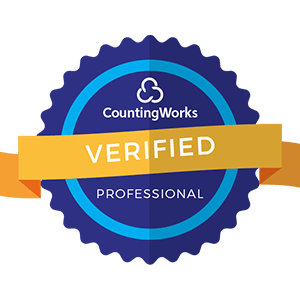
The traditional 9-to-5 office job is becoming a relic of the past. Employees today want flexibility, freedom, and fulfillment in their careers. Companies that fail to adapt to these changing expectations risk losing top talent to organizations that offer better work-life integration. The data shows that flexible and remote work policies attract motivated workers, reduce turnover, and enable businesses to survive unexpected disruptions. This blog will explore the benefits of flexible and remote work arrangements and provide best practices for implementing successful alternate work models.

Technology has untethered many jobs from the confines of the traditional office. Video conferencing, cloud computing, and collaboration tools allow employees to work productively from anywhere. Forward-thinking companies have embraced flexible and remote work to access a global talent pool, reduce overhead costs, and provide work-life balance for their team.
According to a survey by FlexJobs, over 65% of people say working from home would be an essential factor when considering future job offers. Research by Global Workplace Analytics estimates that 25-30% of the workforce will work from home multiple days a week by the end of 2021. Leading technology companies like Dell, SAP, and Salesforce have publicly announced flexible and permanent remote work policies. This cultural shift challenges the traditional mentality of employees needing to "show up" in an office daily.
Implementing flexible and remote work models has become a strategic priority for attracting talent, enabling business continuity, and boosting productivity. A survey by Buffer found that 99% of remote workers would like to work remotely for the rest of their careers. A study published in Harvard Business Review also saw a 13% increase in performance from remote employees. The data shows that flexible and remote work arrangements will become a requirement at forward-looking companies, not just a perk.
The COVID-19 pandemic dramatically accelerated the transition to flexible and remote work. Lockdowns forced companies to equip employees for remote collaboration rapidly. According to PwC research, over 55% of company leaders say the shift to remote work has gone better than expected. An MIT study also found 77% of workers want flexibility in where they work in the future.
The pandemic proved remote collaboration is possible at scale across industries. Companies invested heavily in tools and policies to enable effective virtual teams. Employees experienced the benefits of schedule flexibility and no commute. This forced experiment conclusively demonstrated flexible and remote models can succeed.
While the pandemic started the shift, more significant economic and cultural trends are cementing flexible work's staying power. Employees expect autonomy over when and where they work. Companies know supporting flexibility is critical for attracting modern talent while controlling overhead costs. The future is flexible, and the point of no return has likely passed.

Decades of research point to dramatic benefits from offering flexible and remote work options
Employees gain back hours of productivity each week by eliminating commutes and office distractions. Managers also benefit from objective metrics of work output versus time spent "at a desk."
Flexibility over schedules and locations reduces stress and allows employees to integrate work with personal lives better. This freedom results in higher job satisfaction.
Companies can reduce real estate footprints and overhead costs with fewer employees in centralized offices. Savings from increased productivity also quickly add up.
Flexible and remote models significantly reduce carbon footprints by limiting commutes and energy consumption in large offices. This supports sustainability initiatives that are increasingly important to employees and shareholders.
Flexible and remote models provide equal opportunities for groups traditionally faced with workforce barriers, like new parents and minorities. By focusing on performance versus presence, diverse talent can contribute more fully.
The benefits clearly show why flexible and remote work is required to attract and retain top talent. The data highlights significant advantages for both employee well-being and company productivity.
Beyond the organizational advantages, flexible and remote models empower individuals and improve lives. Surveys show remote employees appreciate:
Work flexibility allows people to integrate careers with their desired lifestyles. This improves physical and mental health, stronger relationships, and more engaged communities.
Flexible work also enables several macroeconomic benefits:
Increased work flexibility will shape the future of how societies function and evolve. Adapting systems to enable remote living could significantly improve the quality of life.
Transitioning to flexible and remote work models involves much more than having people work from home. Companies should thoughtfully structure programs and support cultural change to maximize the benefits. Below are best practices based on experience and research.
Rather than a one-size-fits-all approach, give employees multiple options to suit their work styles and situations best. Popular flexible work models include:
Create policies for flexibly managing schedules, workspaces, roles, and hours. Emphasize output and accountability rather than physical presence.
Ensure company policies align with the desired flexible and remote work culture. Some best practices include:
Setting expectations upfront will minimize confusion and ensure seamless integration of remote employees. Continually solicit feedback to improve programs.
Remote team members risk feeling isolated or overlooked. Implement strategies to include them, such as:
Distributed team members can feel valued and engaged with the right culture and technology.
Managing remote teams requires different skills than traditional office management. Invest in retraining programs that cover:
Developing virtual management expertise is crucial for maximizing the benefits of flexible work programs.
Flexible and remote work models require continual iteration and improvement. Best practices include:
Regularly survey employee experiences and gather feedback.
Analyze productivity data and assess program benefits.
Benchmark policies and practices against industry leaders
Have leadership keep a pulse on program effectiveness
Refine policies and training to address issues.
Ongoing optimization ensures flexible arrangements continue enabling employee and company success.
Rather than being all or nothing, hybrid models blending remote and in-office work are ideal for many companies. Benefits of mixed schedules include:
Determine optimal team configurations and schedules for hybrid models based on work requirements, employee preferences, and business goals.
Remote work enables more flexible collaboration without everyone needing to coordinate synchronous meetings. Tools like Slack, Teams, and Email allow conversations to unfold organically over time. Benefits of asynchronous communication include:
With the right tools, teams can collaborate effectively without real-time meetings dominating schedules. Define norms for asynchronous communication rhythm and cadence.
Transitioning to flexible business models requires optimizing for the cloud. Key steps include:
A cloud-first approach means employees can be productive from anywhere while securing company assets.
IT leaders may resist flexible work over cybersecurity concerns. Address these issues through steps like:
Security risks from distributed work can be managed with the right policies and technology.
The data conclusively shows flexible and remote work is the future. Employees expect freedom over when, where, and how they work. Companies that embrace flexible models will access global talent, reduce costs, and keep workers engaged.
But simply sending people home with laptops is not a complete strategy. To maximize benefits, companies must take an intentional approach to program structure, cultural change, management training, and ongoing optimization. When executed strategically, flexible models create work cultures where employees and businesses thrive.
The 9-to-5 office job made sense for the industrial era but no longer suited the global and digital economy. In the future, companies will compete for top talent by providing work models matching modern lifestyles. Employees want mobility, autonomy, and fulfillment in their careers. By implementing flexible and remote models, forward-thinking companies can attract the best and brightest. Work will never look the same, but the possibilities for positive change are endless.
Widespread flexible work will also influence urban planning and transportation systems. With fewer daily commuters, cities can reimagine downtown office spaces for other uses like housing. The design of towns may shift from central business districts to more distributed mixed-use neighborhoods.
Urban transportation networks strained by peak rush hour traffic can also be right-sized for flexible commuting patterns. Plans for infrastructure like new highways and rail lines may need to be reassessed with lower demand projections. Autonomous vehicles could further reduce the need for parking infrastructure.
However, cities must avoid the pitfalls of urban decline seen in the 20th century. Flexible workers still desire vibrant, amenity-rich communities. Improvements in placemaking and quality of life will be crucial to retaining urban tax bases. Cities that proactively adapt to flexible work patterns can thrive.
As collaborative technologies improve, a sharp decline in business travel is likely. Companies have realized many meetings can happen just as effectively over videoconference. High costs and wearying journeys make virtual meetings attractive.
However, some in-person visits will still be needed to build relationships, inspect sites, or make sales. Companies may shift from routine trips to only essential in-person meetings. The bar for approving travel will be higher.
Hotels, airlines, and other business travel providers must adjust to shrinking demand. However, technology and flexibility can create new opportunities. For example, converter hotels designed for hybrid remote/in-person gatherings are already being built.

Access to global talent will allow companies to be highly selective in hiring. No longer constrained by geography, they can recruit the best candidates worldwide. This also enables improved diversity and inclusion in hiring.
Retention will become even more of a competitive advantage. Companies offering the most flexible models will win over top talent. Forward-thinking firms will build cultures of empowerment and autonomy.
Training and change management will also become ongoing processes rather than one-time events. Careers will span decades, and skills will need continuous upgrading. Companies that invest in employee development will keep workers engaged.
More dynamic approaches may replace traditional compensation like salaries and equity. Pay may be tied to specific project results versus hours logged. Bonuses or stipends could cover home office costs for remote employees.
Benefits will need to be unbundled from physical workplaces. Company-provided wellness programs, meals, gyms, and childcare will likely transition to stipends or virtual offerings. Compensation will shift to supporting individual employee needs versus one-size-fits-all perks.
Healthcare could also become more consumerized. Employees may select plans tailored to their locations, life stages, and family needs. Benefits will feel more flexible and personalized.
With dispersed teams, maintaining a solid culture becomes even more critical. Regular all-hands meetings, offsites, social hours, and Slack conversations build connections between locations.
Culture also becomes more individually driven without set office spaces and hours. Employees need self-direction to stay aligned with company values and people. Training in ethics, collaboration, and leadership helps maintain culture.
And culture will be shared through digital spaces that reflect brand identity. Company intranets, chat channels, and virtual campuses allow personality to shine remotely. The future office is digital.
Companies will retain high-end campuses strategically while reducing overall real estate footprints. Offices will be redesigned as collaboration spaces versus cubicle farms. More flexibility over distances and hours will allow higher utilization of facilities.
Companies may launch a network of distributed coworking offices to support local, flexible workers. Workspace will become an on-demand resource versus a daily destination. Intelligent building technologies will enable seamless hybrid office experiences.


